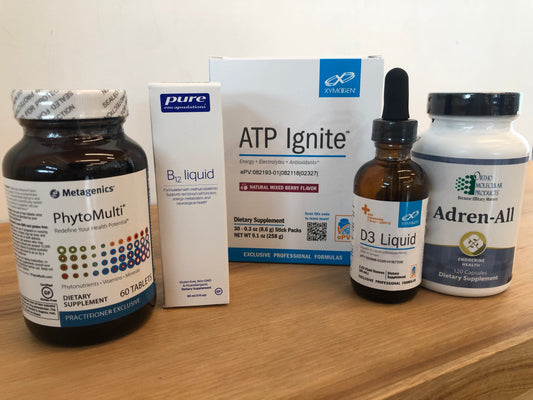We think of menopause as a time when a woman’s body experiences a sharp drop in hormones, mainly estrogen, bringing about a host of dreadful symptoms. Menopause will bring about profound hormonal changes, but managing those changes takes a delicate balance. Menopause and perimenopause manifests differently in different women. It is not always about a deficit of hormones – in many cases, an overabundance can also have devastating effects. Estrogen is important, but it is not the only hormone to consider. Progesterone and testosterone also play huge roles. Finding a personal balance between all three is key.
Here is a simple guide to help you watch for potential symptoms of hormone imbalance.
Estrogen
Responsible for bringing on puberty, regulating the menstrual cycle, and bolstering our bone health, estrogen starts to decrease in women between the ages of 40-55. When we talk about menopause, our primary concern is a decreasing level of estrogen but an overabundance of the hormone can be a big problem as well.
Too High = Weight Gain, Irregular Menses, Anxiety, Breast Tenderness & Mood Swings
Too Low = Hot Flashes, Dry Skin & Hair, Depression, Night Sweats, Vaginal Dryness, Decreased Memory
Progesterone
Along with estrogen, progesterone is produced in the ovaries and adrenal gland. Essential for maintaining pregnancy, it also plays a vital role in the menstrual cycle and helps to maintain a healthy libido.
Too High = Fatigue, Ovarian Cysts
Too Low = Sleep Disturbances, Cramps, Fluid Retention
Testosterone
Often overlooked as we tend to think of it as a male hormone, testosterone is a naturally occurring and essential hormone for women. Testosterone contributes to women’s bone mass, lean muscle mass, energy, and libido. When it gets out of whack, it can wreck havoc.
Too Low = Sexual Side Effects, Decreased Memory
Too High = Hair Loss (particularly if combined with fluctuations in thyroid, estrogen and progesterone)
How do you find the right balance?
There is no quick hormone fix. The solution is not about pumping the body full of estrogen to make up an imagined deficit at the age of 45. Rather, it takes a more individualized approach of testing and optimizing a treatment plan specific to your symptoms and needs. High/low levels across the big three may work in concert to make symptoms worse, for instance, high estrogen and low progesterone can make your mood swings, well, moodier.
So, how do you determine what your hormone levels are? Join us on Wednesday, October 15th at our Lakeway store for our free event, Margaritas and Menopause, with Dr. Kevin Hoffarth of BioFit Medicine. Enjoy complimentary margaritas as Dr. Hoffarth discusses how to identify -and overcome- the symptoms of menopause and perimenopause. Learn more about your options for testing and treatment at this free, community event! RSVP to contact@rxhca.com.
For more on hormones and menopause, check out our blog post 10 Natural Ways to Combat Menopause Symptoms.
About the author
A lifelong Austinite, Joseph Drummond is one of our pharmacists at Hill Country Apothecary. Having been raised by school teachers, he loves to learn and considers himself a life-long student. He earned his B.S. at UT-Austin in Microbiology, pursued a masters in Biochemistry at Texas State, and received his Doctorate of Pharmacy from Texas A&M Health Science Center. His expertise is focused around functional medicine, drug-induced nutrient depletions, hormone replacement therapy and adrenal health. His passion for helping and healing others drives him to coordinate with physicians to create compounded medications that are tailored for an individual’s unique circumstances.


